Topics
Category
Era
Officers’ Training Camps At Fort Snelling, 1917
At camps held around the country during World War I, the U.S. Army quickly trained the officers it needed to grow from a small defensive force into one of millions, ready to step onto the world stage. Fort Snelling hosted two such camps in 1917: one between May 11 and August 15 and another between August 28 and November 27.
When America entered the war in 1917 it had only 200,000 soldiers. The country needed millions of troops to send “over there” to Europe. It also needed officers to lead the new recruits and show them how to hold a rifle, flank a machine gun position, and peel a potato.
One site selected to train these new officers was Fort Snelling. Six thousand men applied for the two officers' training camps; four thousand were accepted. Candidates submitted evidence and testimonials attesting to their character, loyalty, education, and business experience. In line with Army policy, the camp accepted whites only; African Americans trained at a camp in Iowa.
Candidates came from all over Minnesota, Iowa, Nebraska, North Dakota, and South Dakota, and the National Guard. They were trained in infantry, artillery, and engineer skills in three-month courses. The career officers derided them as “ninety-day wonders” because they didn’t have the depth of experience of an officer who had been in the Army for decades.
The first camp got underway on May 11, 1917. Candidates reported for training, went through a physical examination, marched off to the quartermaster’s department for a uniform and equipment, and joined squads based on height.
From there, drill and training started in earnest. Reveille sounded at 5:15 AM and candidates were kept on the go until lights-out at 11 PM. In between, they did drills in the morning and received instruction in the afternoon. Thirty minutes of physical activity were followed by breakfast and drills. The afternoon was spent in more instruction and the evenings in studying the next day’s material.
On Saturday mornings, all participants turned out for inspection. Candidates who passed were given leave for the remainder of the weekend. Many spent their precious off-hours studying, including three candidates who rented a hotel room in Minneapolis and spread maps out on the floor as they worked out tactical problems. Although alcohol was forbidden to officers-in-training, they drank beer as they worked. When an officer discovered them, he arrested them and made a report to the commanding general.
Several days a week were devoted to marches, which developed into mock battles against a fictitious enemy. The men deployed in skirmish lines, sent out scouts, and dug into defensive positions against stiff resistance from their invisible enemy. There were several Battles of Pilot Knob across the river from the fort. The men took a ferry across the Mississippi River (the Mendota Bridge wasn’t built until 1926), then fought uphill in the heat, humidity, and bugs of a steamy Minnesota summer.
Towards the end of this phase of the training, the men marched down to Bloomington, which was then a rural community of just over a thousand people. The next day they “fought” their way back to the fort, digging in against a tough enemy just south of the post along Bloomington Road. This heralded the next phase of the training, which moved from open or skirmish warfare to trench warfare training. Candidates learned how to dig in, assault, defend a trench line, and mount patrols into no-man’s land, among other exercises.
The following Monday, on August 13, 1,551 commissions were granted. By the evening of August 15, the new officers went on their way to their assignments.
The second officers’ training camp ran from August 28 to November 27. Because of the impending winter as well as a shift in instructional focus, less emphasis was placed on skirmish warfare and more on trench tactics. These included assaulting and defending a trench, grenade throwing, and bayonet drill.
Of the 1500 candidates who started the camp, just 971 received commissions. Those who were assigned to the Signal Corps were given their commissions a couple of days early so they could leave the camp in secrecy and head overseas.
By November 27, all of the newly minted officers had left Fort Snelling and the 36th Infantry Regiment moved into the barracks.
Bibliography
Holbrook, Franklin F., and Livia Appel. Minnesota in the War With Germany. 2 vols. St. Paul: Minnesota Historical Society, 1932.
Related Resources
Primary
Minnesota War Records Commission collected materials, 1909–1936 (bulk 1917–1920)
State Archives, Minnesota Historical Society, St. Paul
Description: Papers of individuals, records of organizations, and printed materials relating to wartime activities, collected or compiled by the War Records Commission.
http://www2.mnhs.org/library/findaids/gr00973.xml
Secondary
Kunz, Virginia Brainard. Muskets to Missiles: A Military History of Minnesota. St. Paul: Minnesota Statehood Centennial Commission, 1958.
Web
Minnesota Historical Society, Historic Fort Snelling. The Fort Expands: 1865–1940.
http://www.historicfortsnelling.org/history/military-history/later-conflicts
Related Images
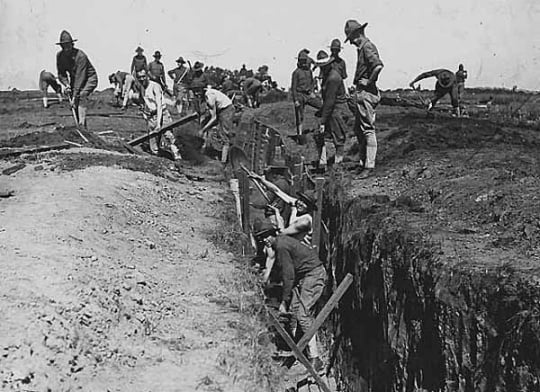
Officers-in-training build a trench at Fort Snelling
Officers-in-training build a trench at Fort Snelling, 1917.
Public domain
Holding Location
More Information

View of cantonments at Fort Snelling
View of cantonments at Fort Snelling, 1917.
Public domain
Holding Location

Bird’s-eye view of cantonments at Fort Snelling
Bird’s-eye view of cantonments at Fort Snelling, 1917.
Public domain
Holding Location
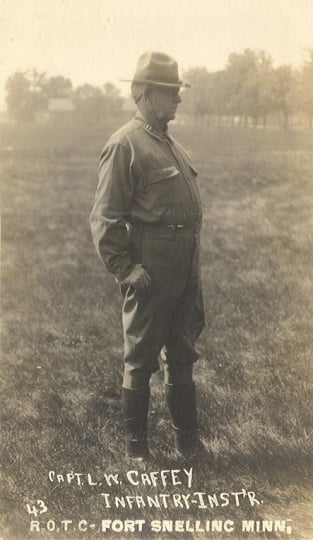
Captain L. W. Caffey, infantry instructor
Captain L. W. Caffey, infantry instructor, at Fort Snelling, ca. 1917.
Public domain
Holding Location
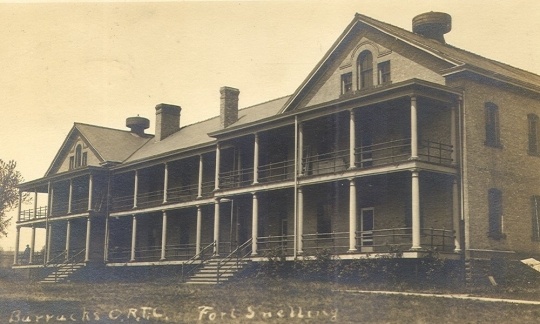
Officers’ training camp barracks at Fort Snelling
Officers’ training camp barracks at Fort Snelling, ca. 1917.
Public domain
Holding Location
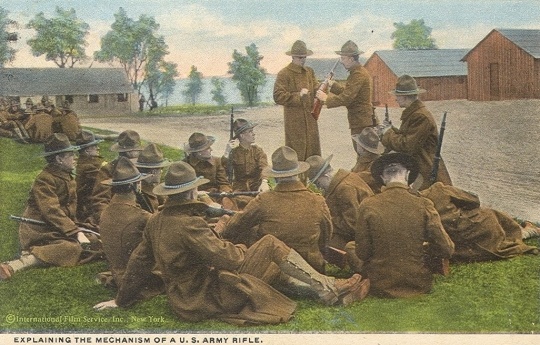
Rifle-training postcard
Postcard depicting rifle training, ca. 1917.
Public domain
Holding Location
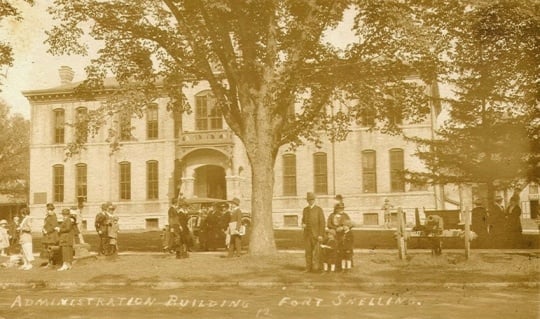
Administration building at Fort Snelling
Administration building at Fort Snelling, ca. 1917.
Public domain
Holding Location
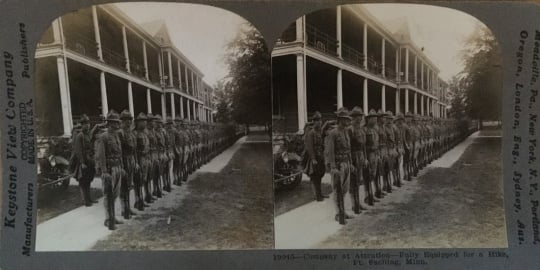
Officers-in-training
Stereoview of officers-in-training at Fort Snelling, ca. 1917.
Public domain
Holding Location
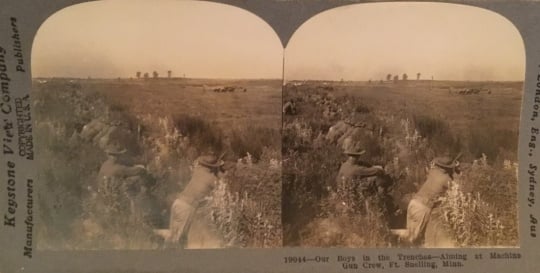
Stereoview of rifle drill inside a trench
Stereoview of officers-in-training in a trench during a drill at Fort Snelling, ca. 1917.
Public domain
Holding Location
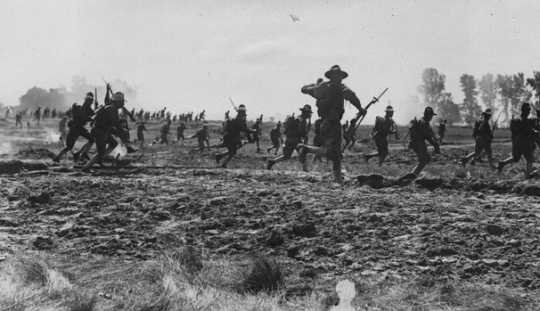
Officer candidates advancing
Officer candidates advancing during military maneuvers, 1917.
Public domain
Holding Location
More Information
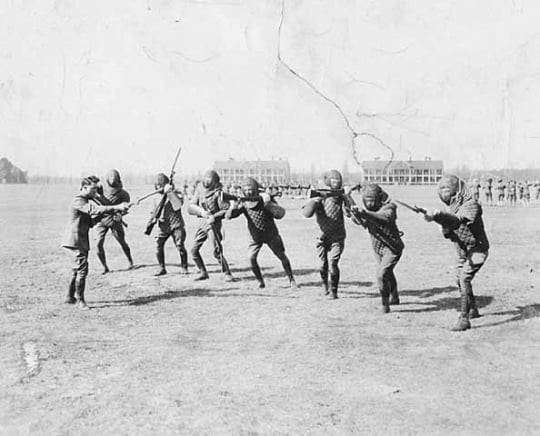
Bayonet drill at the Officers’ Training Camp, Fort Snelling
Bayonet drill at the Officers’ Training Camp, Fort Snelling, 1917.
Public domain
Holding Location
More Information
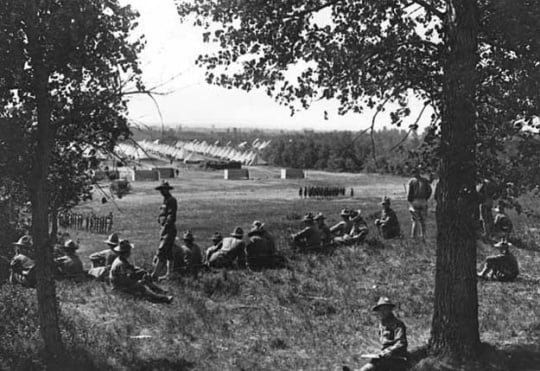
Officer candidates resting
Officer candidates overlooking encampment at the Officers’ Training Camp, Fort Snelling, 1917.
Public domain
Holding Location
More Information
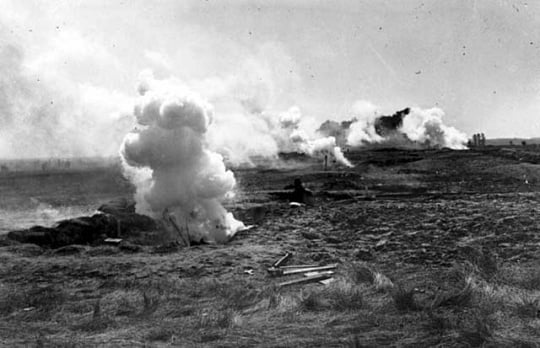
Mock explosions at the Officers’ Training Camp, Fort Snelling
Mock explosions during war maneuvers at the Officers’ Training Camp, Fort Snelling, 1917.
Public domain
Holding Location
More Information
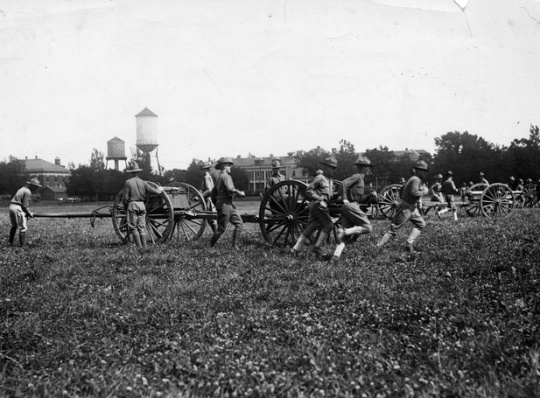
Artillery maneuvers at the Officers’ Training Camp, Fort Snelling
Artillery maneuvers at the Officers’ Training Camp, Fort Snelling, 1917.
Public domain
Holding Location
More Information
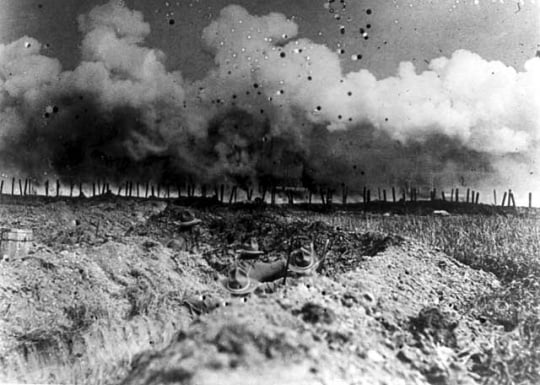
Mock warfare at the Officers’ Training Camp, Fort Snelling
Mock warfare at the Officers’ Training Camp, Fort Snelling, 1917.
Public domain
Holding Location
More Information
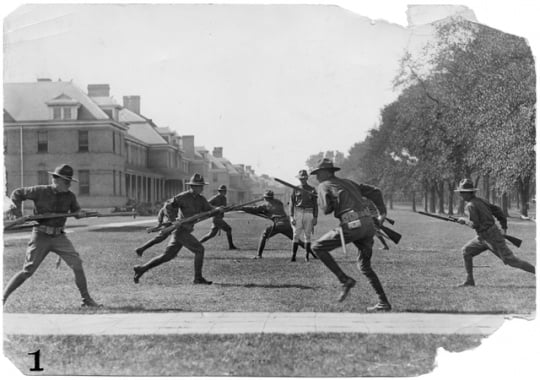
Bayonet drill in front of officers' quarters
Bayonet training at the Officers’ Training Camp, Fort Snelling, 1917.
Public domain
Holding Location
More Information
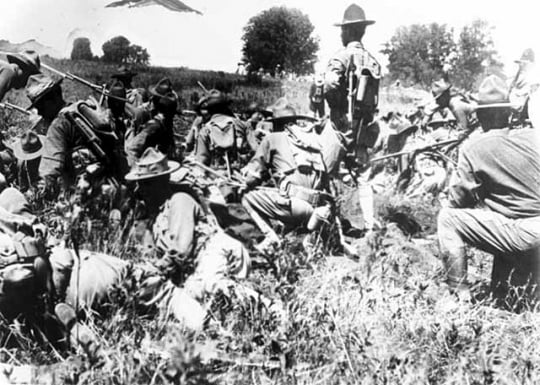
Candidates in the field
Candidates in the field at the Officers’ Training Camp, Fort Snelling, 1917.
Public domain
Holding Location
More Information

Soldier’s kit
Candidates looking over United States Army kit at the Officers’ Training Camp, Fort Snelling, 1917.
Public domain
Holding Location
More Information
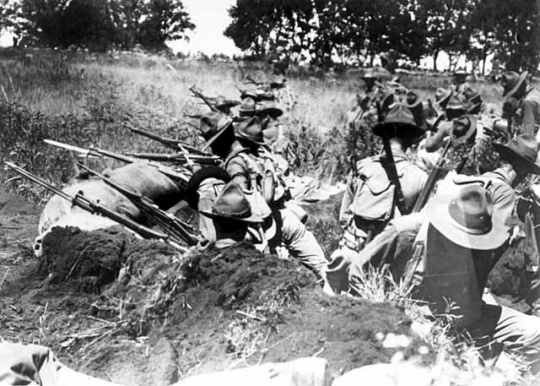
Candidates in entrenchments
Candidates in entrenchments at the Officers’ Training Camp, Fort Snelling, 1917.
Public domain
Holding Location
More Information
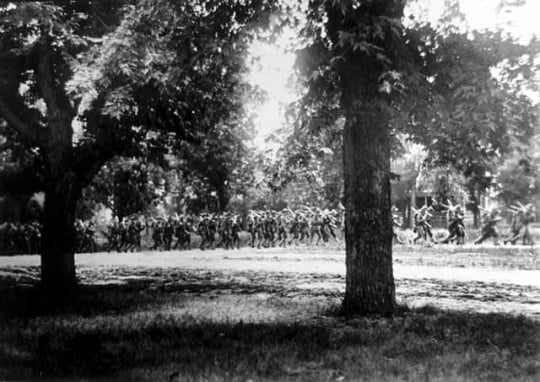
Candidates marching
Candidates marching in formation at the Officers’ Training Camp, Fort Snelling, 1917.
Public domain
Holding Location
More Information
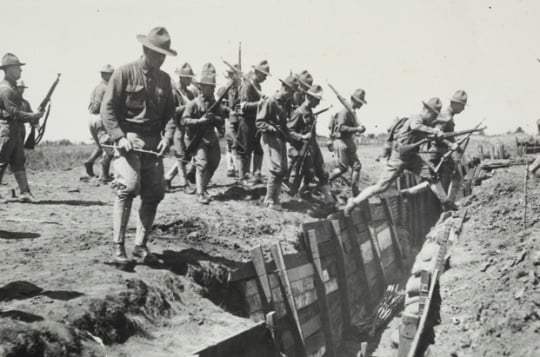
Candidates jumping over entrenchment
Candidates jumping over an entrenchment at the Officers’ Training Camp, Fort Snelling, 1917.
Public domain
Holding Location
More Information
Related Articles
Turning Point
On May 11, 1917, candidates report to Fort Snelling for training as military officers, and the first of two camps at the post begins.
Chronology
April 6, 1917
April 23, 1917
April 27, 1917
May 11, 1917
May 13, 1917
June 15, 1917
August 8–9, 1917
August 15, 1917
August 28, 1917
November 22, 1917
November 25, 1917
November 27, 1917
Bibliography
Holbrook, Franklin F., and Livia Appel. Minnesota in the War With Germany. 2 vols. St. Paul: Minnesota Historical Society, 1932.
Related Resources
Primary
Minnesota War Records Commission collected materials, 1909–1936 (bulk 1917–1920)
State Archives, Minnesota Historical Society, St. Paul
Description: Papers of individuals, records of organizations, and printed materials relating to wartime activities, collected or compiled by the War Records Commission.
http://www2.mnhs.org/library/findaids/gr00973.xml
Secondary
Kunz, Virginia Brainard. Muskets to Missiles: A Military History of Minnesota. St. Paul: Minnesota Statehood Centennial Commission, 1958.
Web
Minnesota Historical Society, Historic Fort Snelling. The Fort Expands: 1865–1940.
http://www.historicfortsnelling.org/history/military-history/later-conflicts






















